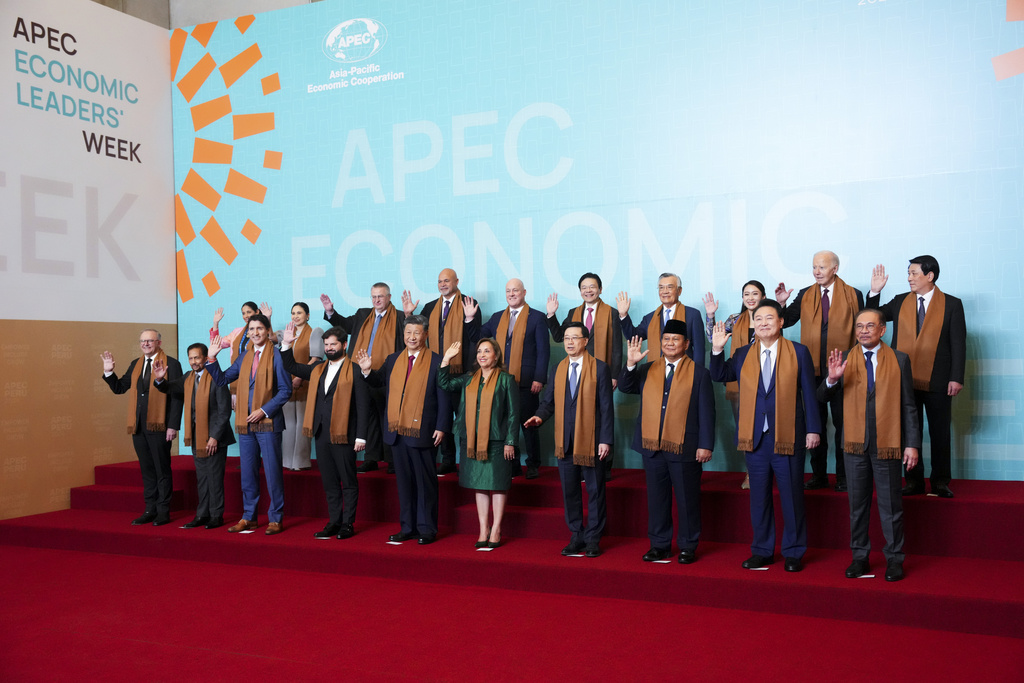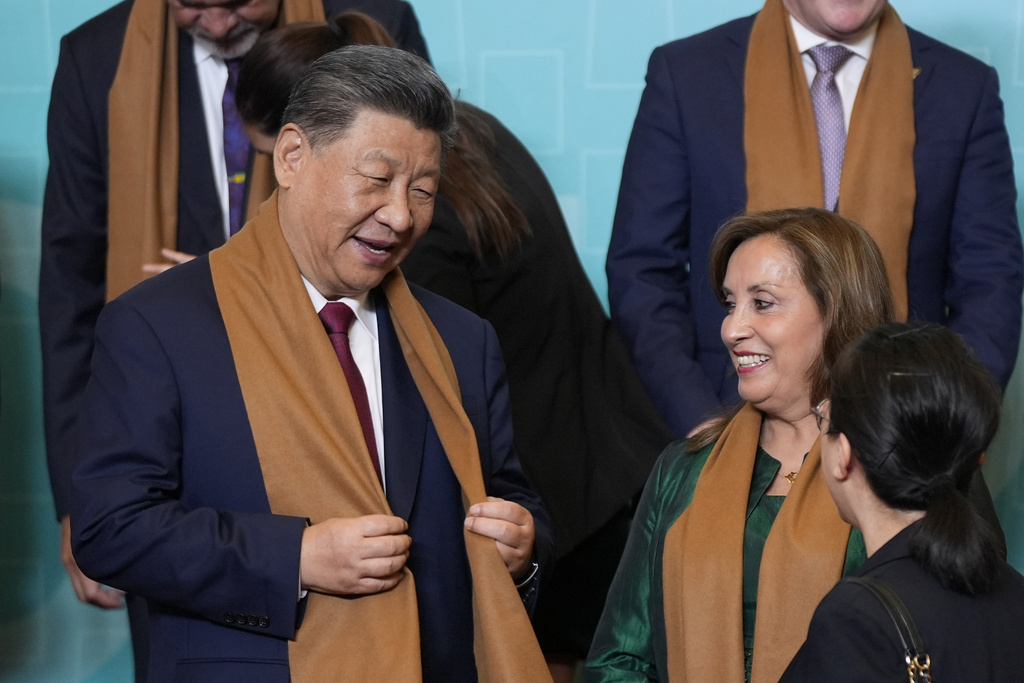APEC Summit 2024 Wraps Amid U.S.-China Trade Rivalry \ Newslooks \ Washington DC \ Mary Sidiqi \ Evening Edition \ The 2024 APEC Summit in Lima spotlighted intensifying U.S.-China tensions as 21 global leaders gathered to discuss trade and economic cooperation. President Joe Biden attended his last summit, signaling America’s diminishing role in globalization as Donald Trump’s presidency approaches. Meanwhile, Xi Jinping cemented China’s leadership position, using the event to champion free trade and inaugurate a $1.3 billion megaport in Peru.

APEC Summit 2024 Quick Looks
- Meeting Overview: Leaders from 21 Pacific Rim economies convened for the APEC Summit in Lima, Peru, to discuss regional trade, investment, and cooperation.
- Biden’s Legacy: U.S. President Joe Biden made his final appearance at the forum, as America faces questions about its future role in global trade.
- China Takes the Lead: President Xi Jinping positioned China as a leader in globalization, rejecting protectionism and expanding economic partnerships in Latin America.
- Photographic Symbolism: Biden’s late arrival for the APEC family photo contrasted with Xi Jinping’s central placement, reflecting America’s diminishing influence.
- Global Shifts: The summit highlighted the rising rivalry between the U.S. and China, underscoring broader tensions in trade and security policies.
Deep Look
This year’s APEC showcased stark contrasts in leadership styles and visions for the future of globalization, particularly between the United States and China. While President Joe Biden attended as one of his last official acts in office, his presence was largely overshadowed by Chinese President Xi Jinping, who used the summit as a platform to highlight China’s growing influence and economic power.
A Metaphor in the Family Photo
The traditional APEC family photo session captured a moment of symbolic significance. As the leaders took their places on the risers, Biden was notably absent, leaving them awkwardly waiting for five minutes. When he eventually arrived, he quietly took his spot in the far back corner, a position that seemed to reflect the United States’ retreat from global leadership.
The leaders wore bark-colored Peruvian wool scarves, a nod to APEC’s tradition of showcasing the host country’s cultural heritage. However, the unity suggested by the matching attire belied the significant tensions underlying the summit’s discussions.
Xi Jinping’s Push for Globalization
Xi Jinping emerged as the central figure at this year’s APEC, presenting himself as a champion of globalization. He used his speeches to denounce protectionist policies and advocate for greater economic integration. This message resonated as Xi inaugurated a $1.3 billion megaport in Peru, a project emblematic of China’s Belt and Road Initiative. The initiative has significantly expanded China’s economic ties with Latin America, positioning the nation as a key partner for the region’s development.
Biden’s Final APEC Summit
For Joe Biden, the APEC Summit marked a poignant farewell to the international stage. As reporters shouted questions about his thoughts on this being his last APEC appearance, Biden declined to comment, leaving much unsaid about the legacy he hoped to leave behind.
The summit also featured a meeting between Biden and Xi, their third and final one during Biden’s presidency. While details of their discussions remain private, it is widely believed they addressed the deepening trade and security competition between their nations. This rivalry has shaped much of Biden’s foreign policy agenda and is expected to define the global economic order for years to come.
Broader APEC Themes
The discussions also touched on critical challenges such as climate change, digital trade, and the post-pandemic economic recovery. However, these topics often took a backseat to the more immediate geopolitical drama playing out between the U.S. and China.
The Uncertain Future of APEC
As the APEC Summit concluded, it left behind a sense of uncertainty. The incoming Trump administration’s commitment to withdrawing from global trade agreements raises questions about the forum’s future relevance. Without active U.S. participation, APEC may become a platform dominated by China, further cementing its role as a global economic leader.







